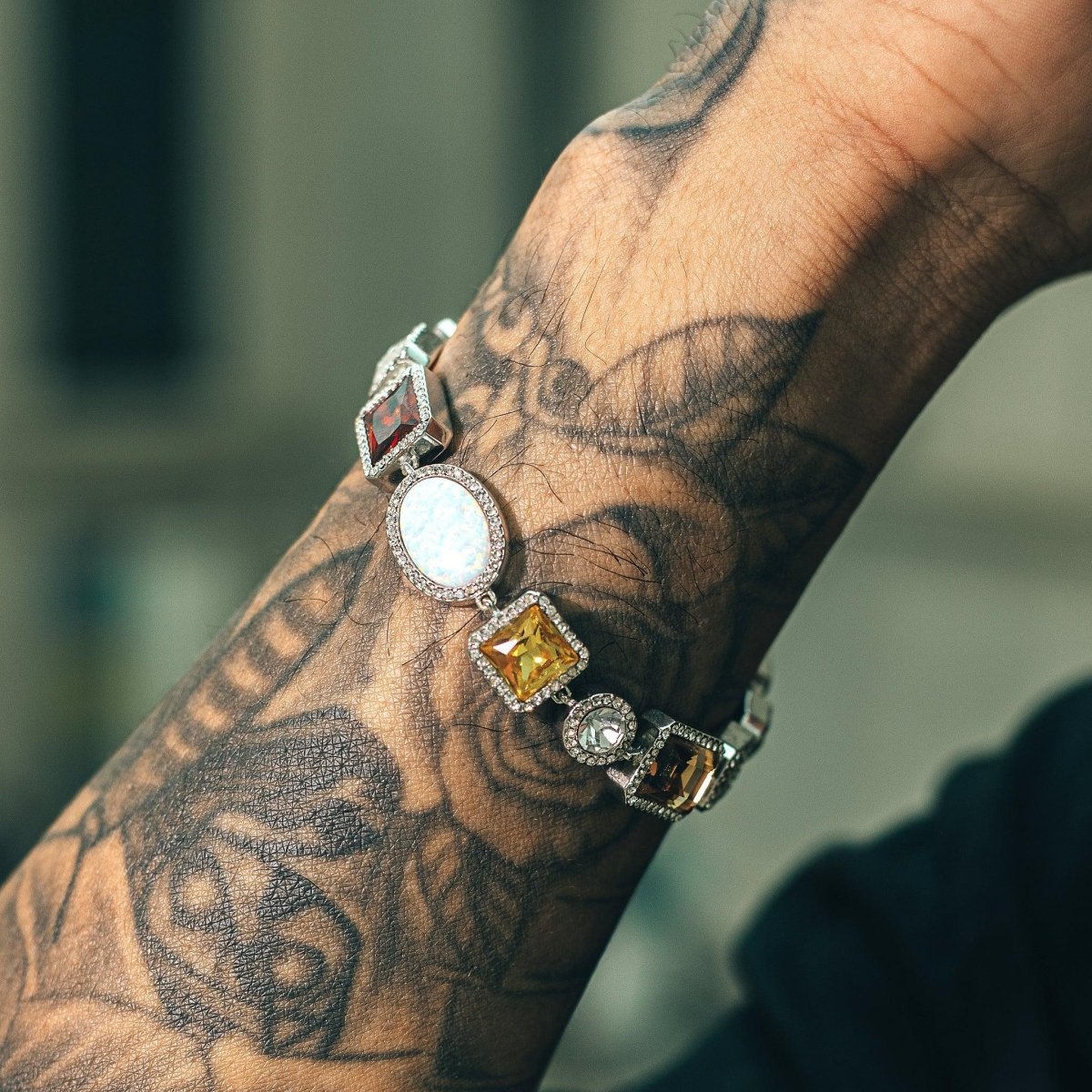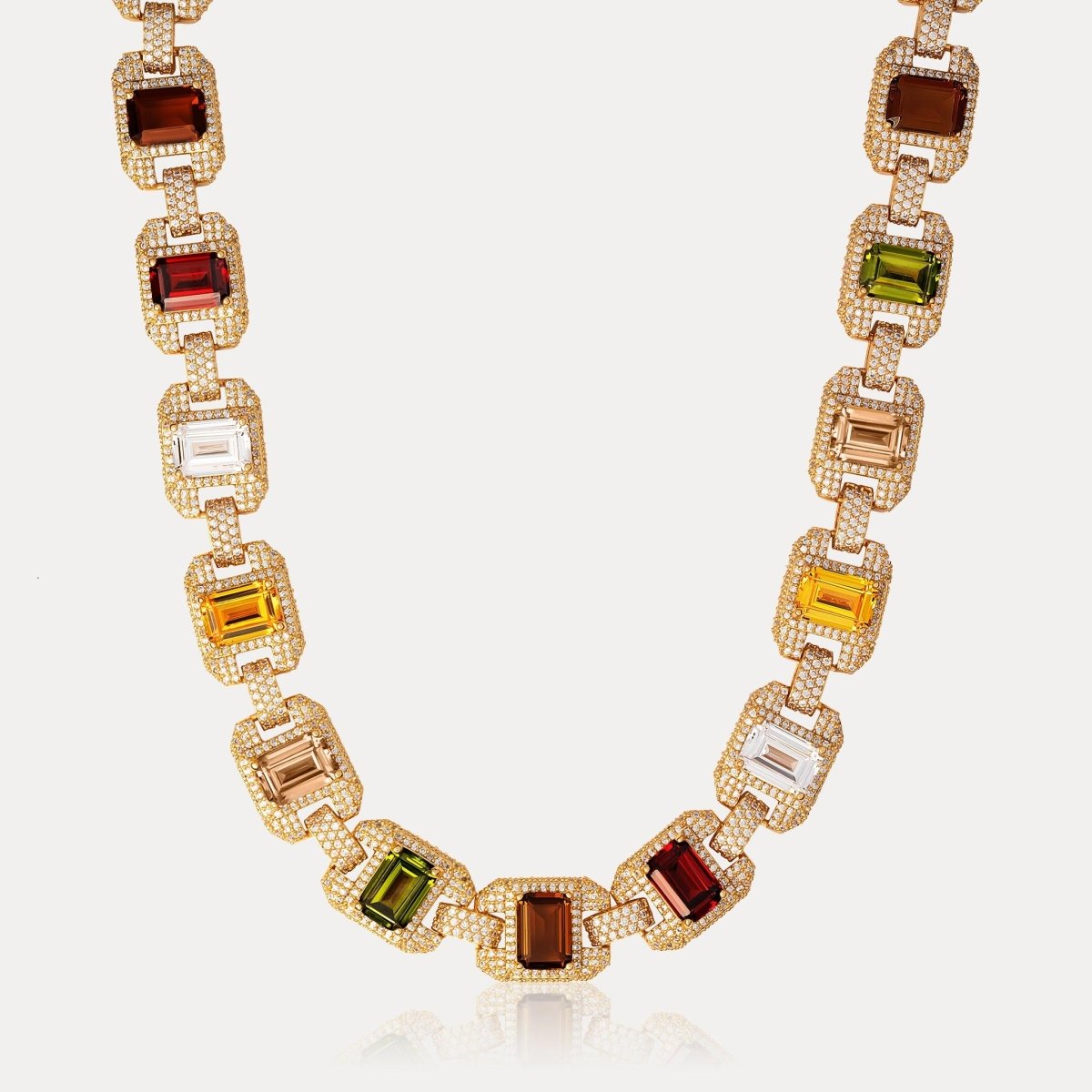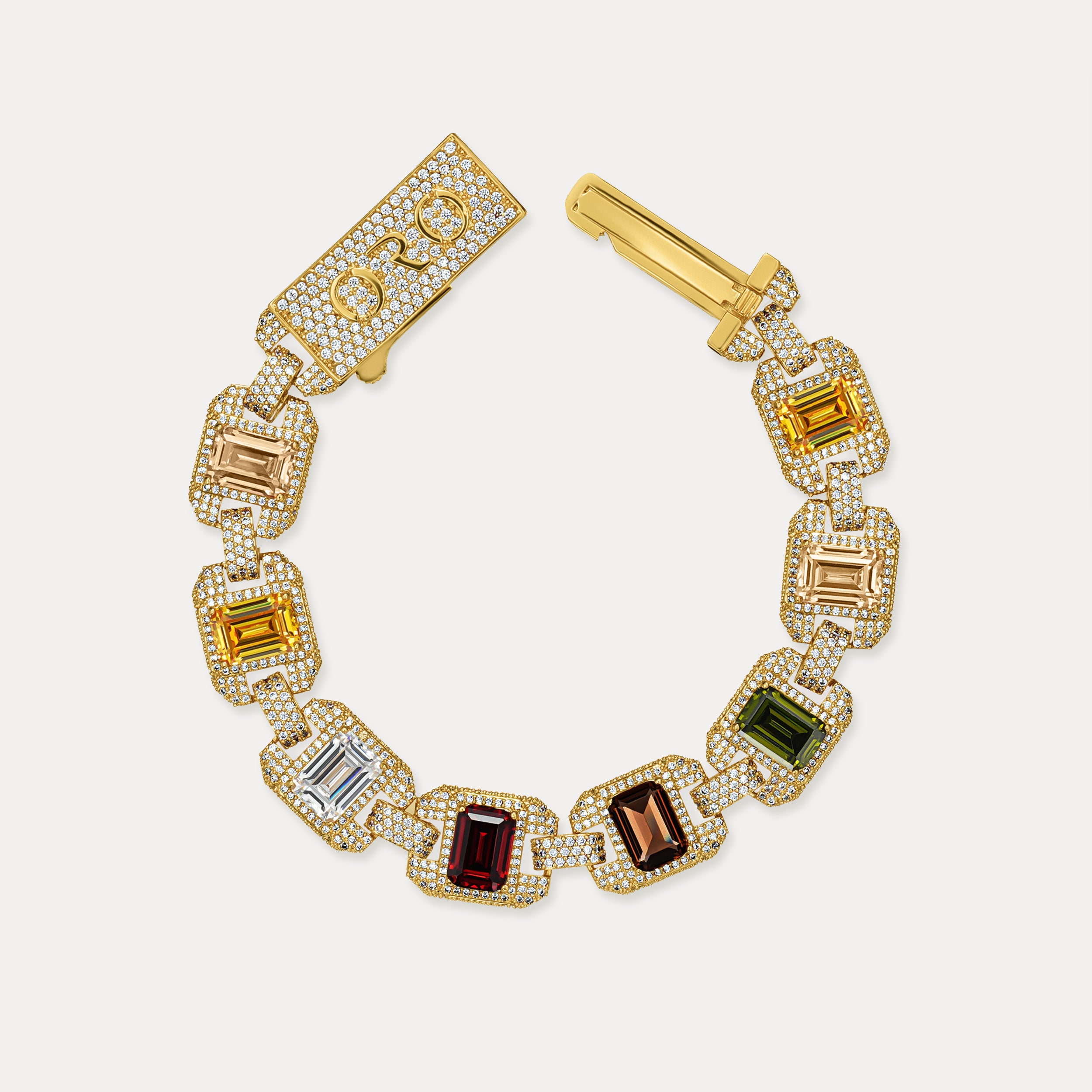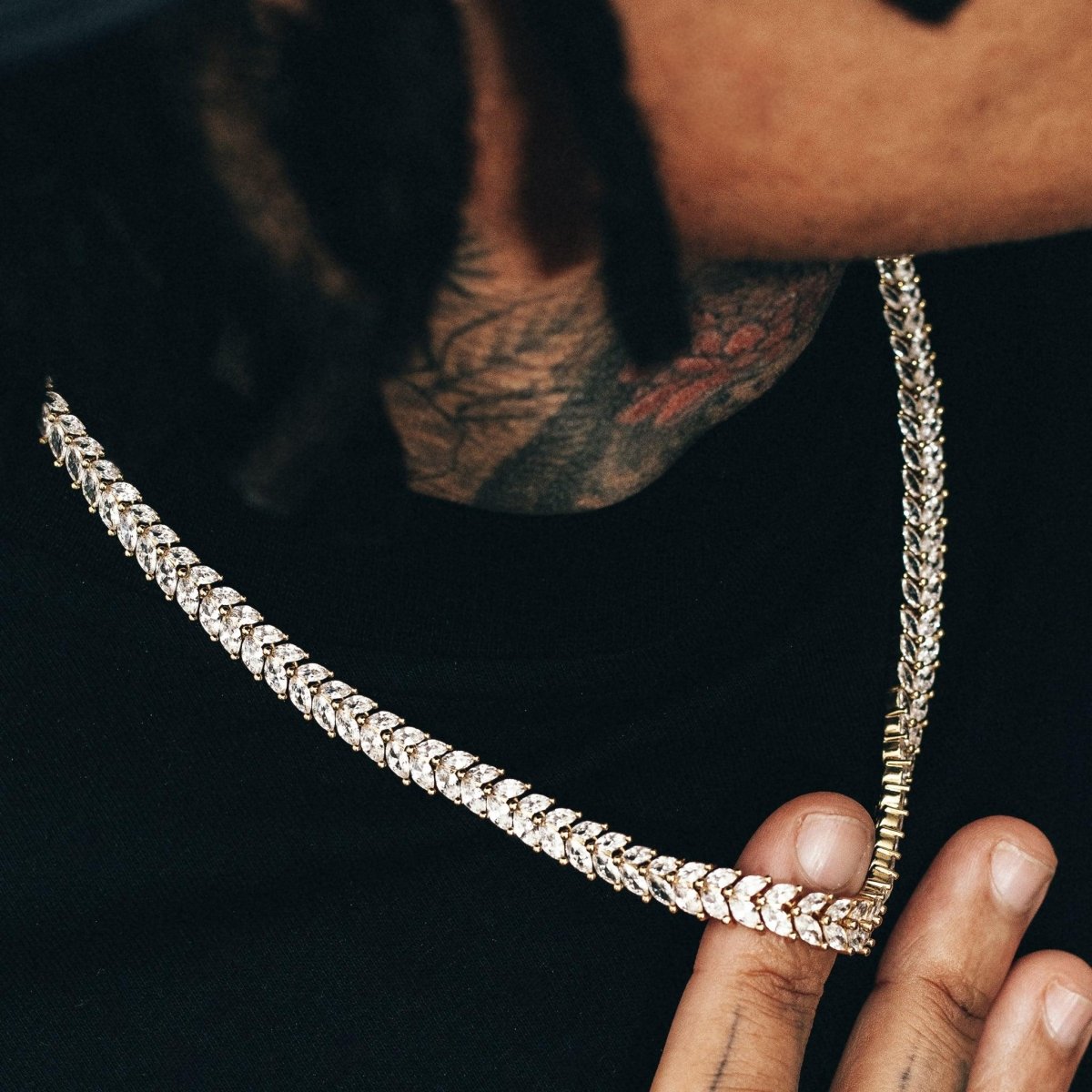The ultimate guide on how to check if gold is real
Gold is a precious metal that has been valued for centuries. Whether you're buying or selling gold, it's important to know if it's real or fake. There are several methods you can use to check the authenticity of gold, including testing its physical and chemical properties, using magnetism, conducting conductivity tests, and performing acid tests. In this guide, we will explore these methods in detail and provide key takeaways to help you determine if gold is real.
Key Takeaways
- Understanding the properties of gold is essential for determining its authenticity.
- Testing the weight and density of gold can provide valuable information.
- Magnetism can be used as a preliminary test for gold.
- Conductivity tests can help differentiate between real and fake gold.
- Acid testing is a common method used to determine the purity of gold.
Understanding the Properties of Gold
The Physical Properties of Gold
Gold is a dense, soft, and malleable metal with a bright yellow color. It is highly valued for its beauty and rarity. Density is an important property of gold, with a density of approximately 19.3 grams per cubic centimeter. This high density makes gold heavier than most other metals. Gold is also a good conductor of electricity and heat. It has a melting point of 1,064 degrees Celsius and a boiling point of 2,808 degrees Celsius.
Gold is resistant to corrosion and tarnish, making it highly durable. It does not react with most acids, but it can be dissolved by a mixture of nitric acid and hydrochloric acid called aqua regia. This unique combination of properties makes gold a valuable and versatile metal in various industries.
To summarize, the physical properties of gold include:
- Density: 19.3 g/cm³
- Conductivity: Good conductor of electricity and heat
- Melting Point: 1,064°C
- Boiling Point: 2,808°C
- Resistance to corrosion and tarnish
- Reactivity with aqua regia.
The Chemical Properties of Gold
Gold is a highly stable element with a number of unique chemical properties. One of the most notable properties of gold is its resistance to corrosion and tarnish. Unlike many other metals, gold does not react with oxygen or moisture in the air, making it highly resistant to rust and decay.
Another important chemical property of gold is its ability to form alloys with other metals. These alloys can have different properties and characteristics than pure gold, such as increased hardness or different color. Common alloys of gold include white gold, rose gold, and yellow gold.
In addition to its resistance to corrosion and its ability to form alloys, gold is also known for its excellent conductivity. Gold is an excellent conductor of electricity and heat, making it highly valuable in various industries, including electronics and jewelry making.
Overall, the chemical properties of gold contribute to its unique and valuable characteristics, making it a highly sought-after precious metal.
Testing the Weight and Density of Gold
Weighing Gold
When it comes to determining the authenticity of gold, one of the first steps is weighing the gold. This helps in assessing the purity and value of the gold. To accurately weigh gold, it is important to use a precise and calibrated scale. Here are some key points to keep in mind when weighing gold:
- Use a digital scale that can measure small increments to ensure accurate results.
- Place the gold item on the center of the scale and wait for the reading to stabilize.
- Remove any dust or debris from the gold item before weighing to avoid inaccurate measurements.
- Take multiple measurements to ensure consistency and accuracy.
Remember, weighing gold is just the first step in determining its authenticity. There are other tests and methods that should be used in conjunction with weighing to get a comprehensive assessment of the gold's authenticity.
Calculating the Density of Gold
To calculate the density of gold, you will need to measure its mass and volume. Here is a step-by-step guide:
-
Weigh the gold using a precise scale. Make sure to remove any impurities or foreign substances.
-
Measure the volume of the gold by submerging it in a graduated cylinder filled with water. The change in water level will give you the volume.
-
Divide the mass of the gold by its volume to calculate the density. The formula is density = mass/volume.
-
The density of pure gold is approximately 19.3 grams per cubic centimeter. If the calculated density differs significantly from this value, it may indicate that the gold is not pure.
Remember, accurate measurements are crucial for obtaining reliable results. Take your time and follow the steps carefully to ensure accurate calculations.
Using Magnetism to Test Gold
The Magnetic Properties of Gold
Gold is not magnetic, which means it does not attract or repel magnets. This is one of the key properties that can help determine if gold is real or fake. While other metals like iron and nickel are magnetic, gold is not affected by magnetic fields. This is because gold is a non-ferrous metal, meaning it does not contain iron. Therefore, if a piece of jewelry or a gold coin is attracted to a magnet, it is likely not made of real gold.
It is important to note that some gold alloys may contain small amounts of magnetic metals, such as iron or nickel. However, the magnetic properties of these alloys are significantly weaker compared to pure gold. Therefore, even if a gold alloy is slightly magnetic, it is still considered to be real gold.
To test the magnetic properties of gold, you can simply hold a magnet close to the gold item and observe if there is any attraction or repulsion. If the gold does not react to the magnet, it is likely genuine.
Testing Gold with a Magnet
When testing gold with a magnet, it is important to note that gold is not magnetic. This means that if a piece of jewelry or a gold coin is attracted to a magnet, it is likely not made of pure gold. However, it is important to keep in mind that some gold alloys may contain small amounts of magnetic metals, which can cause a weak attraction to a magnet. To determine the authenticity of gold using a magnet, follow these steps:
- Hold the magnet close to the gold item and observe if there is any attraction.
- If the gold item is attracted to the magnet, it is likely not made of pure gold.
- If there is no attraction, it is a good indication that the gold is real.
Remember, using a magnet is a quick and simple test, but it is not foolproof. It is always recommended to use multiple testing methods to ensure the accuracy of the results.
Conductivity Tests for Gold
Electrical Conductivity of Gold
Gold is known for its excellent electrical conductivity, which is one of its distinguishing properties. It is highly conductive, meaning it can easily transmit electricity. This makes gold a valuable material in various industries, including electronics and telecommunications.
In fact, gold is so conductive that it is often used as a coating on electrical connectors to ensure reliable and efficient transmission of electrical signals. Its high conductivity also makes it resistant to corrosion, which is another advantage in electronic applications.
However, it is important to note that not all gold is equally conductive. The purity of the gold can affect its conductivity, with purer gold being more conductive. Therefore, when testing the electrical conductivity of gold, it is essential to consider the purity of the sample.
To determine the electrical conductivity of gold, various methods can be used. One common method is the use of a conductivity meter, which measures the resistance of the gold sample and calculates its conductivity. Another method is the four-point probe technique, which provides more accurate results for highly conductive materials like gold.
In summary, the electrical conductivity of gold is a crucial characteristic that distinguishes it from other metals. Its high conductivity and resistance to corrosion make it a valuable material in various industries. When testing the conductivity of gold, it is important to consider the purity of the sample and use appropriate measurement techniques.
Thermal Conductivity of Gold
Gold is known for its high thermal conductivity, which is the ability of a material to conduct heat. The thermal conductivity of gold is approximately 310 W/mK. This means that gold can efficiently transfer heat and is often used in applications where heat needs to be conducted away from a source.
Gold's high thermal conductivity is due to its metallic bonding and the free movement of electrons within its structure. The free electrons can easily transfer thermal energy, resulting in the high thermal conductivity of gold.
When compared to other metals, gold has one of the highest thermal conductivities. For example, copper, which is also known for its high thermal conductivity, has a thermal conductivity of approximately 400 W/mK.
In summary, gold's high thermal conductivity makes it a valuable material in various industries where efficient heat transfer is required.
Acid Testing for Gold
Understanding Acid Testing
Acid testing is a common method used to determine the authenticity of gold. It involves applying a small amount of acid to the surface of the gold and observing the reaction. Acid testing can help identify whether the gold is genuine or if it contains other metals or alloys.
When performing acid testing on gold, it is important to follow proper safety precautions. Here are some key points to keep in mind:
- Use a testing kit specifically designed for acid testing gold.
- Wear protective gloves and eyewear to avoid contact with the acid.
- Perform the test in a well-ventilated area to minimize exposure to fumes.
Tip: Before conducting acid testing, it is recommended to first test the acid on a known piece of gold to ensure its accuracy.
Remember, acid testing should be done with caution and by individuals who are familiar with the process. It is always best to consult with a professional jeweler or gold expert for accurate results.
Performing Acid Testing on Gold
Acid testing is a common method used to determine the authenticity of gold. It involves applying acid to a small sample of the metal and observing the reaction. Here are the steps to perform acid testing on gold:
- Choose a testing kit: Start by selecting a reliable acid testing kit that includes different strengths of acids.
- Prepare the sample: Use a file or sandpaper to create a small, clean surface on the gold item for testing.
- Apply acid: Place a drop of acid on the prepared surface and observe the reaction.
- Interpret the results: Depending on the reaction, you can determine if the gold is real or fake.
It's important to note that acid testing can damage the gold item, so it should be done with caution. Additionally, it's recommended to practice on a less valuable item before testing precious jewelry or coins.
Tip: Always follow the instructions provided with the acid testing kit and wear protective gloves and eyewear while performing the test.
Using Nitric Acid to Test Gold
The Reaction of Nitric Acid with Gold
When nitric acid comes into contact with gold, a chemical reaction occurs. The reaction between nitric acid and gold is a key test for determining the authenticity of gold. Gold is known for its resistance to most acids, but it reacts with nitric acid due to the presence of impurities. The reaction can be summarized as follows:
| Nitric Acid (HNO3) | Gold (Au) |
|---|---|
| 3HNO3 + 2Au | 3NO2 + HAuCl4 |
In this reaction, nitric acid oxidizes the gold, forming gold chloride (HAuCl4) and releasing nitrogen dioxide gas (NO2). This reaction is a strong indicator that the tested material contains gold.
It is important to note that this test should be performed with caution as nitric acid is a corrosive substance. Proper safety measures, such as wearing gloves and protective eyewear, should be taken when conducting this test.
Tip: When performing the nitric acid test, it is recommended to use a small amount of nitric acid and observe the reaction carefully.
Performing the Nitric Acid Test
The nitric acid test is a commonly used method to determine the authenticity of gold. It involves applying a small amount of nitric acid to the surface of the gold and observing the reaction. If the gold is genuine, it will not react or show any signs of discoloration. However, if the gold is fake or of low purity, it will react with the acid and may turn green or produce a greenish color.
To perform the nitric acid test, follow these steps:
- Prepare a testing area: Find a well-ventilated space and ensure you have all the necessary materials, including nitric acid and a testing stone.
- Observe the color: Place a drop of nitric acid on the gold and observe the color change. If the gold remains unchanged, it is likely genuine.
- Check for discoloration: If the gold turns green or produces a greenish color, it may indicate that the gold is fake or of low purity.
Tip: It's important to handle nitric acid with caution as it is corrosive. Always wear protective gloves and eyewear when performing the test.
Using Aqua Regia to Test Gold
The Reaction of Aqua Regia with Gold
Aqua regia is a highly corrosive mixture of nitric acid and hydrochloric acid. When aqua regia comes into contact with gold, it reacts to dissolve the gold and form soluble gold chloride. This reaction is highly exothermic and releases toxic fumes, so it should be performed in a well-ventilated area or under a fume hood.
Important Tip: Aqua regia should be handled with extreme caution and proper safety measures should be followed.
To perform the aqua regia test, follow these steps:
- Prepare a small sample of the gold to be tested.
- Mix equal parts of nitric acid and hydrochloric acid to create the aqua regia solution.
- Place the gold sample in a glass container and add the aqua regia solution.
- Observe the reaction between the aqua regia and the gold.
- If the gold dissolves and forms a clear, yellow solution, it indicates that the gold is genuine.
- If the gold does not dissolve or forms a different color solution, it suggests that the gold is not pure.
Remember to handle aqua regia with care and dispose of it properly after use.
Performing the Aqua Regia Test
The Aqua Regia test is a commonly used method to determine the authenticity of gold. It involves mixing nitric acid and hydrochloric acid in a specific ratio to create a powerful and corrosive solution. Here are the steps to perform the Aqua Regia test:
- Safety Precautions: Before starting the test, ensure you are wearing appropriate protective gear, including gloves and goggles, as Aqua Regia is highly corrosive.
- Sample Preparation: Take a small sample of the gold item you want to test. It is recommended to use a file or sandpaper to create a fresh surface for testing.
- Acid Mixture: Prepare the Aqua Regia solution by mixing three parts hydrochloric acid with one part nitric acid. Always remember to add the acid to the water and not the other way around to avoid splashing.
- Testing Process: Place the gold sample in a glass container and carefully pour the Aqua Regia solution over it. Observe any changes in color or reaction that occur.
- Reaction Observation: Genuine gold will not react or dissolve in Aqua Regia, while counterfeit or impure gold may show signs of discoloration or bubbling.
- Safety Disposal: After the test, it is crucial to dispose of the Aqua Regia solution properly. Neutralize it with a base, such as sodium bicarbonate, before disposing of it in a designated waste container.
Performing the Aqua Regia test can provide valuable insights into the authenticity of gold, but it should be done with caution and in a well-ventilated area.
Other Methods to Test Gold
X-Ray Fluorescence Testing
X-Ray Fluorescence Testing is a non-destructive method used to determine the elemental composition of a sample. This technique works by bombarding the sample with high-energy X-rays, which causes the atoms in the sample to emit characteristic X-ray fluorescence. The emitted X-rays are then analyzed to identify and quantify the elements present in the sample.
X-Ray Fluorescence Testing is widely used in various industries, including jewelry, mining, and archaeology. It provides valuable information about the purity and composition of gold, allowing for accurate identification of real gold.
Here are some key points about X-Ray Fluorescence Testing:
- Non-destructive method: X-Ray Fluorescence Testing does not damage the sample, making it ideal for analyzing precious objects like gold jewelry.
- High accuracy: This technique provides precise and reliable results, ensuring accurate identification of the elements present in the sample.
- Fast and efficient: X-Ray Fluorescence Testing is a quick and efficient method, allowing for rapid analysis of multiple samples.
Remember, X-Ray Fluorescence Testing is just one of the many methods available for testing the authenticity of gold. It is important to use multiple techniques in combination to ensure accurate results.
Ultraviolet Light Testing
Ultraviolet light testing is another method used to check the authenticity of gold. This test involves exposing the gold to ultraviolet light and observing its reaction. Fluorescence is a key characteristic to look for during this test. Genuine gold typically does not fluoresce or emits a very weak fluorescence, while fake gold may exhibit strong fluorescence.
To perform the ultraviolet light test, follow these steps:
- Prepare a dark room or use a UV lamp in a dimly lit area.
- Place the gold item under the UV light source.
- Observe the gold's reaction to the UV light.
- Genuine gold should not exhibit strong fluorescence, while fake gold may appear to glow or emit a bright fluorescence.
It's important to note that while the ultraviolet light test can provide some indication of the authenticity of gold, it is not a definitive test. Other methods, such as acid testing or X-ray fluorescence testing, may be necessary for a more accurate assessment.
Conclusion
In conclusion, determining the authenticity of gold is crucial in today's market. By following the steps outlined in this guide, you can confidently check if gold is real. Remember to look for key indicators such as weight, hallmarks, and magnetism. Additionally, consider seeking professional assistance when in doubt. With these tools and knowledge, you can make informed decisions when buying or selling gold.
Frequently Asked Questions
How can I test if gold is real?
There are several methods to test if gold is real, including conducting weight and density tests, using magnetism, performing conductivity tests, and using acid testing.
What are the physical properties of gold?
Gold is a dense, soft, and malleable metal. It has a bright yellow color and is resistant to tarnish and corrosion.
How do I weigh gold?
To weigh gold, you can use a digital scale or a traditional balance scale. Make sure to convert the weight to grams for accurate measurements.
Can gold be attracted to a magnet?
Pure gold is not magnetic, so if a gold item is attracted to a magnet, it is likely not real gold. However, some gold alloys may have magnetic properties.
What is acid testing for gold?
Acid testing is a method to determine the purity of gold by applying acid to the metal and observing the reaction. Different acid solutions are used depending on the karat of gold being tested.
What is the nitric acid test for gold?
The nitric acid test is a specific type of acid testing that uses nitric acid to check the purity of gold. Pure gold will not react with nitric acid, while lower karat gold or gold alloys will show a reaction.
Best Sellers



















































Leave a comment
This site is protected by hCaptcha and the hCaptcha Privacy Policy and Terms of Service apply.